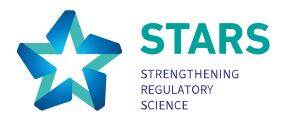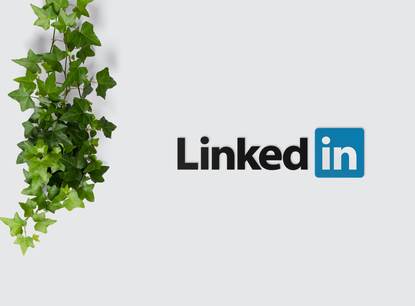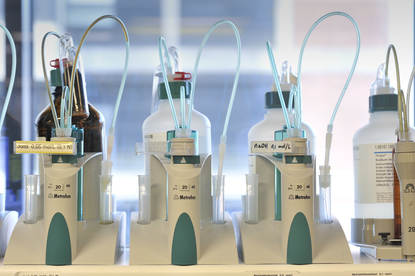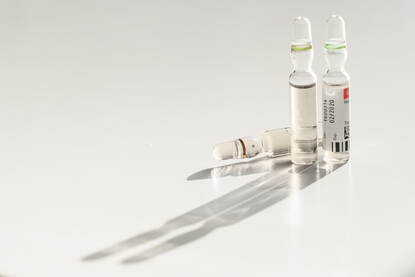Improving regulatory decision-making and the exchange of knowledge between regulatory authorities, healthcare professionals and patients: that is what motivates Peter Mol. His recent appointment as a full professor helps him to build and strengthen these bridges.
As of August 1, 2020, Peter Mol has been appointed Professor of Drug Regulatory Science at the University Medical Center Groningen (UMCG). “Combining regulatory work and research has always been my calling”, he says at the start of the interview. After receiving his PharmD from the University of Utrecht and working as a pharmacist in Namibia, Peter obtained his PhD in 2005, in which he focused on strengthened use of evidence-based guidelines for antimicrobial therapy. “While working on my PhD, I already joined the Dutch Medicines Evaluation Board (MEB) in 2003. It was the start of that combination that still is in place today.”
Today, Peter combines his academic activities with his work as clinical assessor at the Medicines Evaluation Board for cardiovascular and diabetes products. He also is vice chair of the Scientific Advice Working Party (SAWP) of the European Medicines Agency (EMA). “That combination of research and regulatory provides me with a very full schedule, since I’m constantly working on different subjects. But it’s worth it, because it does have a lot of added value. For example, the SAWP work may generate research questions we want to answer. At the SAWP, we get informed at an early stage about new ideas in drug development. I like to call it applied regulatory science.” In Groningen, Peter focuses on research related to patient safety, risk management and risk communication, together with his team of PhD students and post docs at the department, especially Sieta de Vries, his support and colleague. As a vice chair of the SAWP, Peter dedicates one week every month to the working party at the EMA offices in Amsterdam, where he is regularly involved in various ad hoc committee initiatives and procedures. “The EMA also functions by means of many working parties. One of the managerial things I’m involved in is the restructuring process of the many existing standing and temporary working parties, to make them work more efficient but agile.”
Information versus knowledge
The interaction with his colleagues at the MEB also shapes the research Peter focuses on in Groningen. “At the MEB we create a lot of information. Information that is intended for pharmacists, health care professionals, patients and other stakeholders”, he explains. “But we have to actively share that knowledge. For example, risk information about new insights on adverse effects or other issues concerning medication. How can we make sure healthcare professionals and pharmacists really pick up this important information?” Risk communication is one of the focus areas in Peter’s research group. MEB assessor Esther de Vries, one of Peter’s PhD students, is working in this area. “Esther focuses on the uptake and improvement of MEB’s drug safety information in hospitals. She aims to identify whether and how current use of direct professional healthcare communication (DHPC) letters can be improved. We are now investigating this. Should that information be shared digitally or by mail? Who should be addressed as the sender? The industry or the authority? We also studied the impact of safety issues communication by the authorities on media coverage.”
“Another example of research in the area of risk communication is a European research project, in which we assessed the use of mobile apps to report adverse effects. It’s all about information on safety and efficacy, and making it accessible for the target groups.”
Not always knowing what is the best solution. That might just be the most fun part of my job.
New and different ways of data collection
Data collection in relatively new areas, like personalised treatments, is another point of interest for Peter and the SAWP. “How should regulatory bodies cope with these new and different ways of data collection? Take registries, for instance. Knowledge of the benefits and risks of new drugs may be incomplete at the time of marketing approval. Registries offer the possibility for additional, post‐approval, data collection. Registries are an important and frequently used tool for post‐approval data collection for orphan and innovative drugs. My MEB colleague Carla Jonker is researching that specific area in her PhD project.”
Peter feels the evolution in personalised medicines is asking for a new field of applied regulatory science. “We have to assess how to look at multiple on- and off-target effects of medicines more cleverly. What are the right biomarkers to consider? And how much data do we need? It is important to gather enough data. But do we always need clinical outcomes trials to confirm that the benefit-risk balance doesn’t change in a new more precisely defined target population? If you translate that perspective into research, we have to look at what new clinical trial designs may be most efficient to confirm efficacy in targeted populations.”
Moreover, in the International Conference of Harmonisation (ICH) guidelines work Peter tries to agree on a global level when further collection of safety data may no longer be needed. That ICH guideline E19 aims to apply a more selective approach to safety data collection in late stage clinical trials. In a research study – with an MEB intern – Peter investigates what extra value such late stage studies have generated for the safety sections of Summary of Product Characteristics (SmPCs, the drug label). In regulatory science, it comes down to making questions like these researchable.”
In a broader perspective, it is interesting to look at how we collect data in different fields. Peter: “Academic researchers are on a quest collecting as much data in the context of an investigational trial as they can, to answer as many questions of interest to public health as possible. Industrial research focuses on ways to find the right answers to get a drug on the market in the shortest amount of time possible. In this area of tension, you should look at smarter ways of data collection that serve both interests. That also is an area the SAWP is involved in.”
COVID-19 impact
The unprecedented pandemic of COVID-19 also has its impact on the regulatory field. “Regulators are observing now which data really are important and how to connect to the ‘need-to-knows’. It is a matter of finding balance: knowing enough to be able to balance risks and effectiveness and to assure that the right monitoring mechanisms are in place for possible medicines or vaccines”, says Peter. “And how high should we really set the bar on safety and efficacy data? If it is too low, we get into situations like with hydroxychloroquine, from a perspective of (lack of demonstrated) effectiveness and (real) adverse effects. That can create dangerous situations, especially if you look how information is communicated and perceived.”
In any case, the benefit-risk balance should always remain the pivoting point. “Even in extreme situations like the current COVID-19 pandemic. Speeding up work introduces extra levels of uncertainty. Accelerated procedures, rolling reviews: everything is shifting into the next gear. In situations like this it is even more important to share knowledge as much as possible. To keep everybody on the right track.”

STARS, an EU initiative to bridge the translational gap
In Drug Discovery Today, Peter Mol, Viktoriia Starokozhko et al published a feature article:
Strengthening regulatory science in academia: STARS, an EU initiative to bridge the translational gap
Highlights
- Current dialogue between academic researchers and regulators is inadequate;
- The STARS project aims to bridge the regulatory knowledge gap in academic research;
- Early exchange of information between academic researchers and regulators is crucial;
- Regulatory science should be implemented in (bio)medical educational programmes.
STARS
Another thing happening in the fight against corona viruses is the role academic groups take up, whilst researching for new medicines or vaccines. When upscaling, they connect to the industry relatively early in the process. “This is not always the case in traditional drug development, and there is a large translational gap with respect to academia-initiated drug development. But the world is changing rapidly. More and more targeted therapies arise, gene therapies and other small scale treatments, which are developed in the academic world. The same goes for drug rediscovery projects. That is great news, but there’s also another perspective: not all academic research will stand the test of regulatory scrutiny. Sharing knowledge on regulatory science will help academic groups build more robust research protocols that will help close that translational gap. That is why the MEB participates in the STARS project: Strengthening Training of Academia in Regulatory Science.”
At a European level, the project aims to improve regulatory efforts in supporting academic health research with the aim to close that translational gap. “We try to reach academic researchers very early on in planning of their grant applications and strengthen their regulatory knowledge in general by reaching clinical scientists during professional training and qualification. Are experiments conducted the right way, are the right groups included? And how about safety and toxicity studies? All these aspects might benefit”, Peter expects.
He does add that it’s not just about learning academics about the tricks of the regulatory trade. “There is so much knowledge available there. Cutting edge knowledge about clinical features, gene therapies, drug device combinations and other innovative technologies, like 3D drug printing. Areas in which regulatory bodies are lagging behind. We either lack experience with these developments or simply don’t think about that enough yet. That’s why we should build bridges to bring those two worlds closer. I’d love to see that two-way aspect developed in STARS.”
Speaking of new developments, this brings to mind how important it is to think about how we integrate new information into existing knowledge. “Think about interactions, academic research data, and real world data. For the coming years it will be critical to find the right way to combine that information with the data derived from ‘traditional’ pre-marketing clinical trial studies submitted to the regulator. A challenge, in which regulatory bodies can play a directive part if you ask me.”
“Not always knowing what is the best solution. That might just be the most fun part of my job”, Peter thinks. “It’s great to have in-depth discussions, without having a big authorisation file on your desk already. Strengthening the field of regulatory science, by discussing things early on, helps to improve drug development. Developing and improving knowledge together leads to better tools for regulatory decision making. Bringing worlds together, and bringing regulatory science closer to the ‘shop floor’ of everyday healthcare practice is one of my ambitions!”







